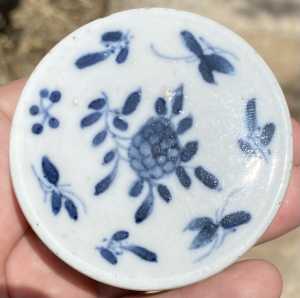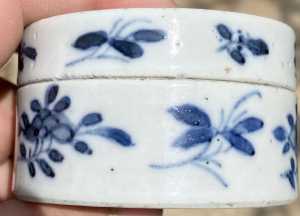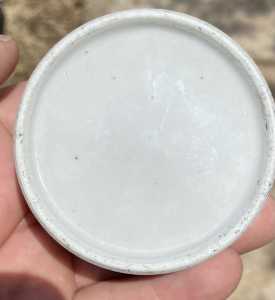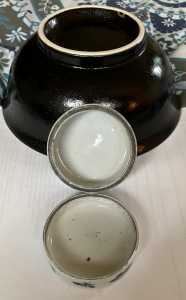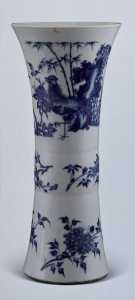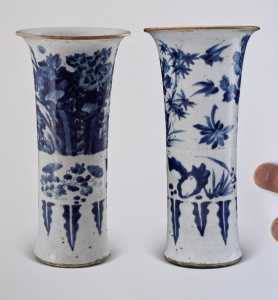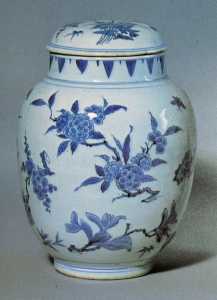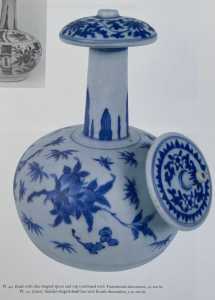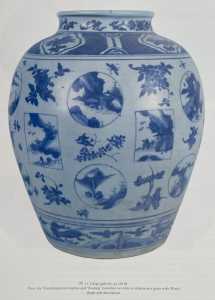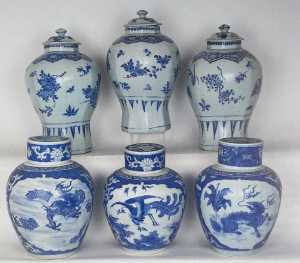The Chinese and Asian Art Forum. For Fans, Collectors and Dealers.
 Basic Rules For the BidAmount Asian Art Forum: Talk about whatever you want. You can even discuss and offer things that are for sale if they are authentic. Maximum image file size per post is 2 MB. Images of 700pxl x 700pxl are optimal if saved at a medium resolution. Be respectful of others and enjoy yourself. Click the YouTube link for a brief tutorial on using the forum. You can also EMBED Videos by cutting and pasting from You-Tube, Vimeo etc.
Basic Rules For the BidAmount Asian Art Forum: Talk about whatever you want. You can even discuss and offer things that are for sale if they are authentic. Maximum image file size per post is 2 MB. Images of 700pxl x 700pxl are optimal if saved at a medium resolution. Be respectful of others and enjoy yourself. Click the YouTube link for a brief tutorial on using the forum. You can also EMBED Videos by cutting and pasting from You-Tube, Vimeo etc.
NOTE: To post an item or add a new post, click open the category title from the FORUM LIST, and CLICK the Blue ADD TOPIC button.
Brian, I would suggest not Ming but could not argue against it being Kangxi. I think this due to the whiteness of the paste and lack of oxide ring from the kiln. The decoration I think is a Ming style and the impurities could suggest Ming but the tint of the glaze and the paste throw me off. Let’s see what the smart folks hav to say.
Ron
@ronm thanks Ron I do notice this design element in Kangxi porcelain. Maybe even transition period.
Hi Brian -
Painting style indicates not Ming ...
As Ron correctly implies the glaze, which lacks the so called ‘duck egg blue’ tone, appears very ‘white’ and may indicate a rather later dating, although this be the image quality and/or lighting conditions ...
If possible, could you post images of the interior of the box and cover? ...
Stuart
@ming1449 , Stewart, the paint style is not Ming. What gives it away? is it the flower motifs and the extra detail in the painting? I saw the technique a free flowing, painted in haste but with the skill that comes with repetition also some of the elements have a vague outline while others just a brush stroke.
Ron
Hi Ron and Brian -
Brian, thank you for the additional interior images ...
Ron, to try and explain, probably not very well, the differences in painting styles please see attached images of the following:-
Images 1/2:- two tall gu vases, H. 36.4/38.6cm, parts of the composition decorated with so called ‘floating branches/flower sprays’ designs. These two vases, both Chongzhen period, provide a good example of the differing painting quality of such wares produced during this period, the first undoubtedly finer, but the painting ‘style’ is similar on both pieces. Tianjin Museum collection ...
Image 3:- Ovoid jar/cover, H. 32cm, overall decoration of ‘floating branches/butterflies’, many similar pieces with various designs were produced for export to Europe. Chongzhen/early Shunzhi periods ...
Images 4/5/6:- All of these pieces were excavated from the so called Hatcher junk, the cargo of which has been dated to between 1643-46, so very late Chongzhen/very early Shunzhi. Included to show the differing painting quality of the ‘floating branches/flower spray designs’ on different vessel shapes ...
This design seem to have continued into the mid Kangxi period, so 1676-1700 but even by then, the painting style had already changed. It was, probably, part of the decoration used during the late 19thC Kangxi revival but again, the painting style would be totally different ...
The painting style on this box/cover is drawn very differently then those seen on know late Ming/early Qing examples above. Also, as mentioned and confirmed by the interior images, the glaze is very white, lacking the blueish tinge present on such wares ...
But just my opinion, and I could well be wrong ...
If Giovanni@clayandbrush looks in and sees this thread he may wish to comment ...
Stuart
@ming1449 thanks Stuart and Ron. I did want to mention that this box does have edge fritting and glaze burning on the edges my understanding is this was a issue in the kiln prior to the 19th century is this correct information? Here is a picture thanks again.
Hi Brian -
I am not a potter but my understanding regarding this is as follows:-
The clay used at the Jingdezhen kilns, both Imperial and private, contains traces of iron oxide impurities. During the firing this produces the orange-brown line/tinge where the unglazed body meets the glaze, also seen on unglazed bases ...
With very few exceptions ie: certain Imperial wares fired during the Chenghua period when the preparation/refinement process of the clay was exceptionally high, it was not until the mid/late 17thC that this iron oxide was ‘leeched out’ during the preparation/refining process and the unglazed bases from this time do not exhibit the orange-brown staining although a slight yellowing tinge may still be present, particularly where the unglazed body meets the glaze ...
For the same reasons above, during the firing these impurities affected the glaze and gave it a slightly bluish tinge. In different kiln sites during the early/mid 11thC this bluish tone was not deliberately cultivated but by the end of that century it became very popular and was actively sought. This was to remain so until the 19thC when it was eliminated and, in consequence, the white glaze of blue and white pieces appears ‘very white or greyish’ ...
I do, as always, stand to be corrected but hope the above is of some help ...
Stuart
Stewart,thank you for the education, I see a difference in technique in the use of empty space in the details to bring out distinction between the painted elements. To be clearer, I noticed the empty space seperating the petals of the flowers and to delineate the halves of the leaf or the suggestion of reflection on the leaf. Were as on Brian’s box there is no empty space doing the same job visually.
I certainly hope this is the point of your lesson. If not, I shall rethink your lesson.
Brian, given the information gleaned from your box I would seem to be as Stewart suggests a Victorian revival peice, the imperfection in the paste and the painting meant to imitate a late Ming transitional box. And I have learned some thing new today.
Ron
Thanks for visiting "The BidAmount Asian Art Forum | Chinese Art"
If you sell on eBay, or have a shop feel free to post images and descriptions and links.
Check back often for discussion about the latest news in the Chinese art and antique world. Also find out about the latest Asian art auctions at Sotheby's, Christie's, Bonhams and Tajans.
Auction results for: fine porcelain, ceramics, bronze, jade, textiles and scholar's objects. As well as Japanese, Thai, Vietnamese and other Asian cultures.
Thank you,
Peter Combs
Topics and categories on The BidAmount Asian Art Forum | Chinese Art
Kangxi vases, Kangxi dishes and chargers, Kangxi ritual pieces, Kangxi scholar's objects, Qianlong famille rose, Qianlong enamels, Qianlong period paintings, Qianlong Emporer's court, Fine porcelain of the Yongzheng period. Chinese imperial art, Ming porcelain including Jiajing, Wanli, Xuande, Chenghua as well as Ming jades and bronzes.
The BidAmount Asian Art Forum | Chinese Art
A free Asian art discussion board and Asian art message board for dealers and collectors of art and antiques from China, Japan, Korea, Thailand, Cambodia, Vietnam and the rest of Asia. Linked to all of the BidAmount Asian art reference areas, with videos from plcombs Asian Art and Bidamount on YouTube. Sign up also for the weekly BidAmount newsletter and catalogs of active eBay listing of Chinese porcelain, bronze, jades, robes, and paintings.
The art of calligraphy - and for the ancient Chinese it certainly was an art - aimed to demonstrate superior control and skill using brush and ink. Calligraphy established itself as one of the major Chinese art forms during the Han dynasty (206 BCE - 220 CE), and for two millennia after, all educated men were expected to be proficient at it.
The Museum’s collections of Asian art span nearly five millennia and encompass the cultures of China, the Himalayas, India, Japan, Korea, and Southeast Asia. In 2007, the Museum launched an initiative to create dedicated galleries for the collection, beginning with a gallery for the arts of Korea ...
Chinese art is full of symbolism, in that artists typically seek to depict some aspect of a totality of which they are intuitively aware.
China Online Museum is the finest online museum of Chinese art. It features Chinese calligraphy, painting, ceramics, bronzes, carving, and other artworks.
Chinese Ceramics & Works of Art. Overview Upcoming auctions Contacts Auction results ... Christie’s sales of Chinese ceramics and works of art showcase centuries of Chinese history. Held throughout the year in London, New York, Paris and Hong Kong, they attract a wide audience of collectors and connoisseurs vying for pieces as diverse as ...
Explore Asian Art Week. Contact the Specialist Department. Chinese Paintings ... Senior Specialist, Head of Sale. [email protected]. Tel:+1 212 641 5760. Bid in-person or online for the upcoming auction:Fine Chinese Paintings on 10 September 2019 at New York. Bid in-person or online for the upcoming auction:Fine Chinese Paintings on 10 ...
Discover an abundance of must-see art from all corners of a vast continent at Christie’s NY Asian Art Week. From contemporary classical and Chinese paintings to works with exemplary provenance from the Art Institute of Chicago, our Rockefeller Paza galleries will be full of ancient treasures and contemporary masterworks in a salute to the vibrant arts of Asia.
Sold to benefit The Art Institute of Chicago’s Asian Art Acquisition Fund, the sale features 84 lots with a focus on Ming and Qing porcelains, and offers a rare insight into the taste for collecting Chinese ceramics and works of art in the Midwest from the end of the 19th century through the 1980s. Highlights include two Wanli wucai garlic-head vases, a Qianlong mark and period, blue and ...
Specialist, Chinese Paintings, Christie's London Dr Malcolm McNeill is a Specialist in Chinese Paintings at Christie’s, based in London. He previously worked as an assistant curator of the Chinese collections and the Victoria and Albert Museum in London, as a researcher at the British Museum, and as a translator and tour guide at the National Palace Museum in Taipei.
The Christie's Education 2020 Conference: The Chinese Art Market 18 Jun 2019 Christie’s Education is delighted to announce our first international academic conference in Asia which will take place in Hong Kong from 26-27 November 2020 at the Hong Kong Convention and Exhibition Centre and will run in parallel with Christie’s Hong Kong Autumn Auctions.
The summer Chinese Art sale in Hong Kong will feature works of art from several private collections, including Qing porcelains and textile from the collection of the legendary Chinese art dealer A. W. Bahr (1877–1959), fine gilt bronze Buddhist sculptures from an old Hong Kong collection, an East Asian collection of Qing dynasty wine cups and jades, and a Japanese collection of Song ceramics ...
Sotheby's Chinese Works of Art Department holds two auctions each year in London, New York, Hong Kong and Paris.
Chinese Art - View Auction details, bid, buy and collect the various artworks at Sothebys Art Auction House.
With more than 340 Chinese works of art dating from the Neolithic to the Republic periods, highlights of this sale include a selection of Qing Imperial monochromes from the collection of Arnold and Blema Steinberg, early ceramics from the Art Institute of Chicago and Chinese porcelain and works of art from the collection of Henry Arnhold.
Results: Sotheby's Asia Week achieved $52.4 million in six strong auctions, exceeding pre-sale estimates. With 76.5% of lots sold and 60.3% of lots surpassing high estimates, the Asian art sales at Sotheby's indicate continued collector interest in the finest works of art from China, India and and the Himalayas.
Today's sale of Important Chinese Art will proceed as planned with sessions at 10 AM and 2 PM EDT. Sotheby's will be monitoring the weather conditions throughout the day and will be available to coordinate alternative bidding options should conditions make it difficult for clients to attend the auction in person.
Bonhams Chinese Art department is renowned for offering the finest works of art representing the richness and breadth of China's artistic heritage, particularly Imperial porcelain, white and spinach green jades, cloisonné and Buddhist art. Specialised international auctions are held globally, including London, Hong Kong and San Francisco.
Bonhams : Chinese Works of Art We use cookies to remember choices you make on functionality and personal features to enhance your experience to our site. By continuing to use our site you consent to the use of cookies. Please refer to our privacy and cookie policies for more information.
Bonhams Fine Art Auctioneers & Valuers: auctioneers of art, pictures, collectables and motor cars. We use cookies to remember choices you make on functionality and personal features to enhance your experience to our site. By continuing to use our site you consent to the use of cookies. ... Chinese Art (US) General enquiries
Bonhams : Fine Chinese Art We use cookies to remember choices you make on functionality and personal features to enhance your experience to our site. By continuing to use our site you consent to the use of cookies. Please refer to our privacy and cookie policies for more information.
Bonhams Fine Art Auctioneers & Valuers: auctioneers of art, pictures, collectables and motor cars Bonhams : Asian Art We use cookies to remember choices you make on functionality and personal features to enhance your experience to our site.
Bonhams are international auctioneers of fine Chinese and Japanese art. We specialise in rare Imperial and Export Chinese ceramics and works of art, as well as Japanese ceramics, fine and decorative works of art from the Neolithic Period to the 20th century. View on map
Bonhams Fine Art Auctioneers & Valuers: auctioneers of art, pictures, collectables and motor cars. We use cookies to remember choices you make on functionality and personal features to enhance your experience to our site. By continuing to use our site you consent to the use of cookies. ... Asian Art Bonhams. Work. 22 Queen St.
